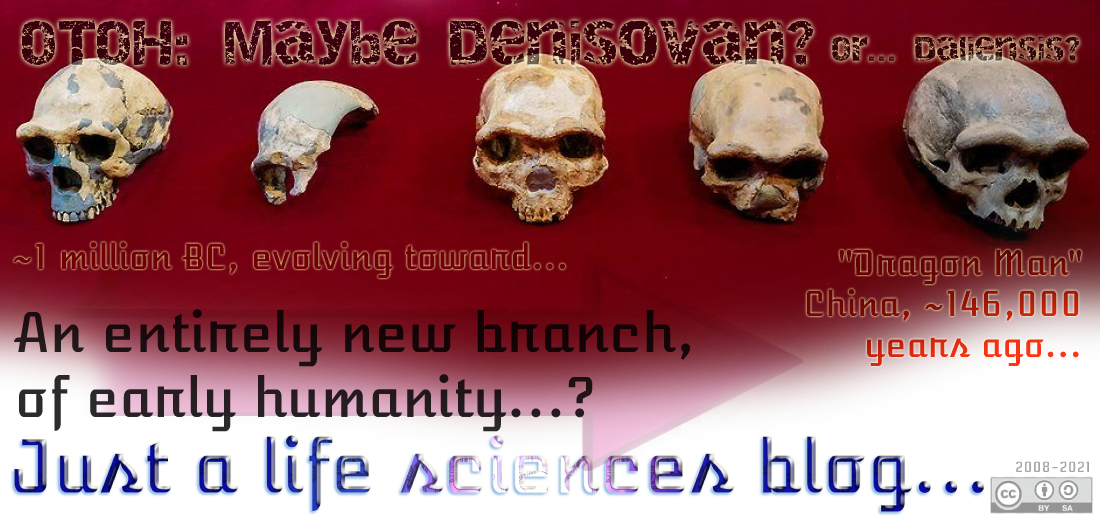Until now, that is. Of course, it is wonderful to -- as an academic -- claim an entirely new species of humanity. But such an extraordinary claim would require. . . extraordinarily strong proof.
And it turns out that the amazingly complete skull found in northeast China fits nicely with the large teeth found in Russia, and the jaw bone found in Tibet -- both, previously labeled as. . . examples of the Denisovan man. That may yet change, but for now -- it is likely more prudent to consider this just a fantastic example of a nearly complete Denisovan skull -- same time frame, as well -- roughly speaking. Consider this updated Beeb story:
. . .The Denisovans were first identified from DNA retrieved from a 50,000-30,000-year-old finger bone discovered in Denisova Cave, Russia. Because the remains associated with this sister lineage to the Neanderthals were so fragmentary, the group has been described as a "genome in search of a fossil record".
Prof. Marta Mirazon Lahr, from the University of Cambridge, believes that Dragon Man was, in fact, a Denisovan. . . .
"The Denisovans are this fascinating mystery population from the past. There is a suggestion (from DNA evidence) that the jawbone found in the Tibetan Plateau might be a Denisovan," she said. "And now because the jawbone from Tibet and Dragon Man look like each other -- now we might actually have the first face of the Denisovan. . . ."
This will forever be fascinating to me: who are we -- collectively? When and where did we arise, to sentience (give or take)? We are, in fact, all more alike. . . than different. Grin.
नमस्ते


















No comments:
Post a Comment